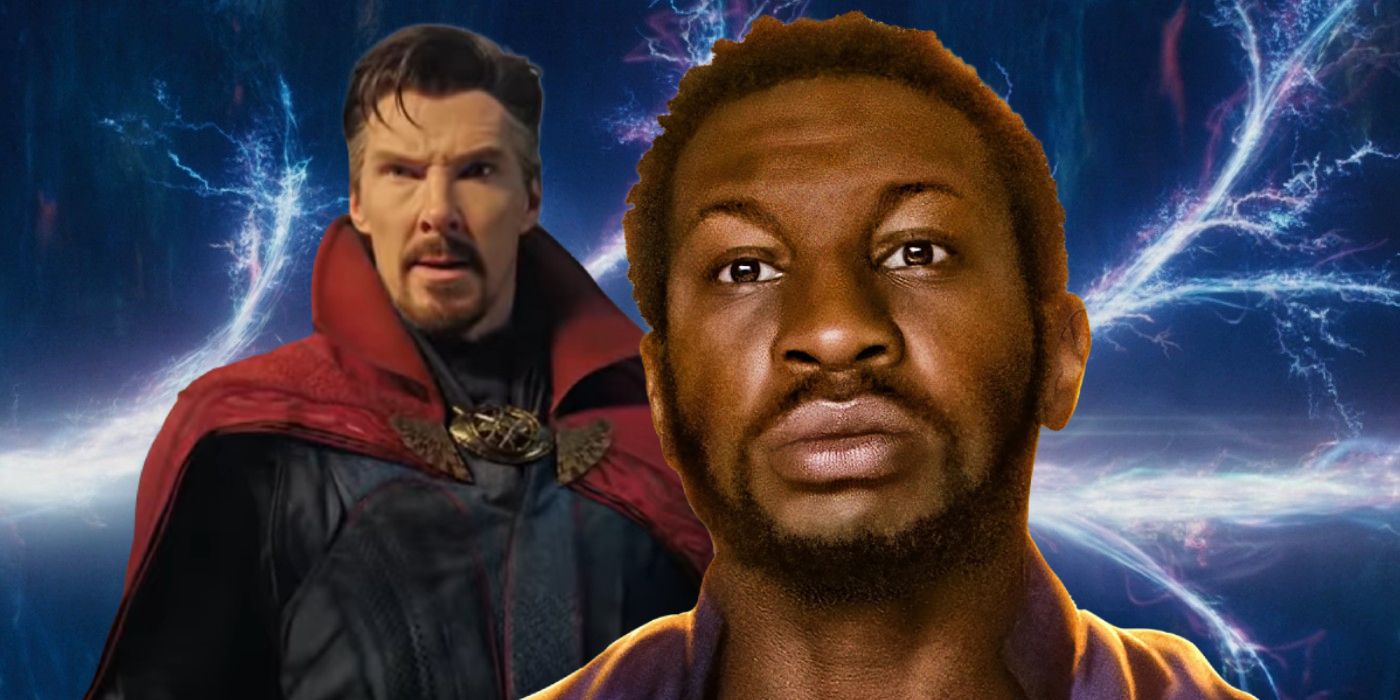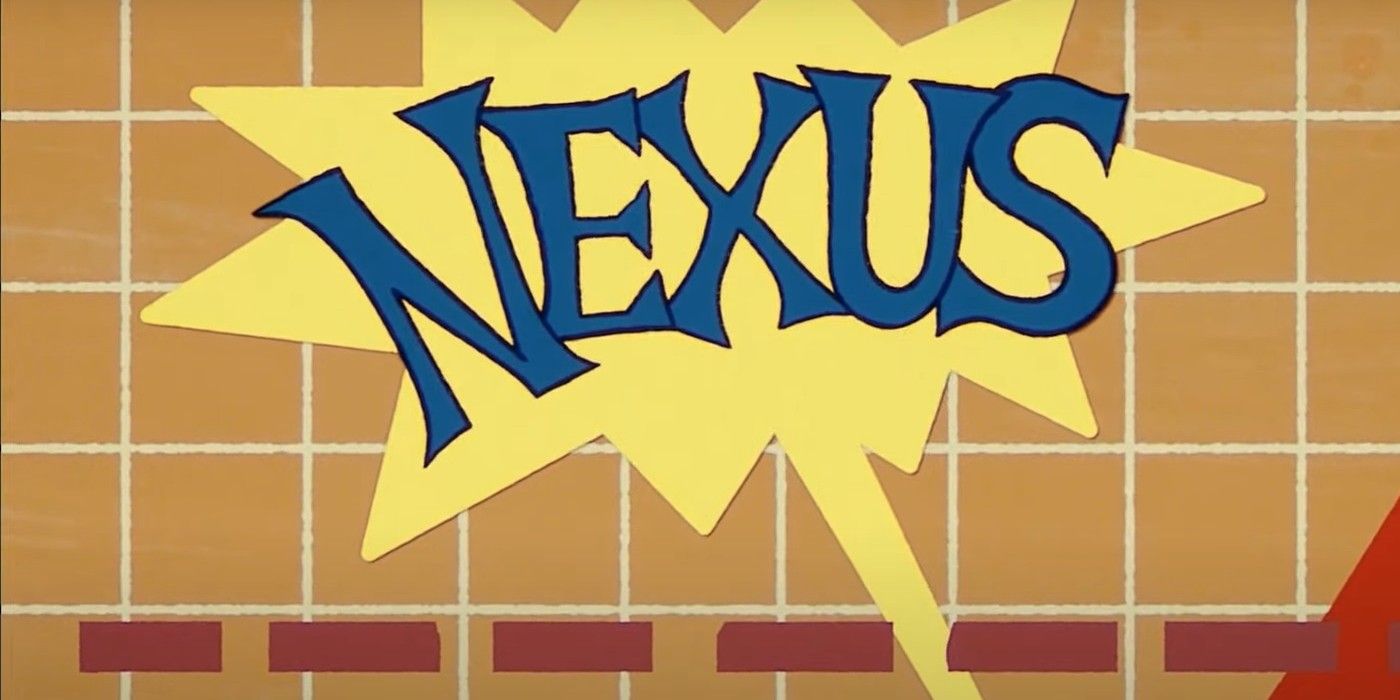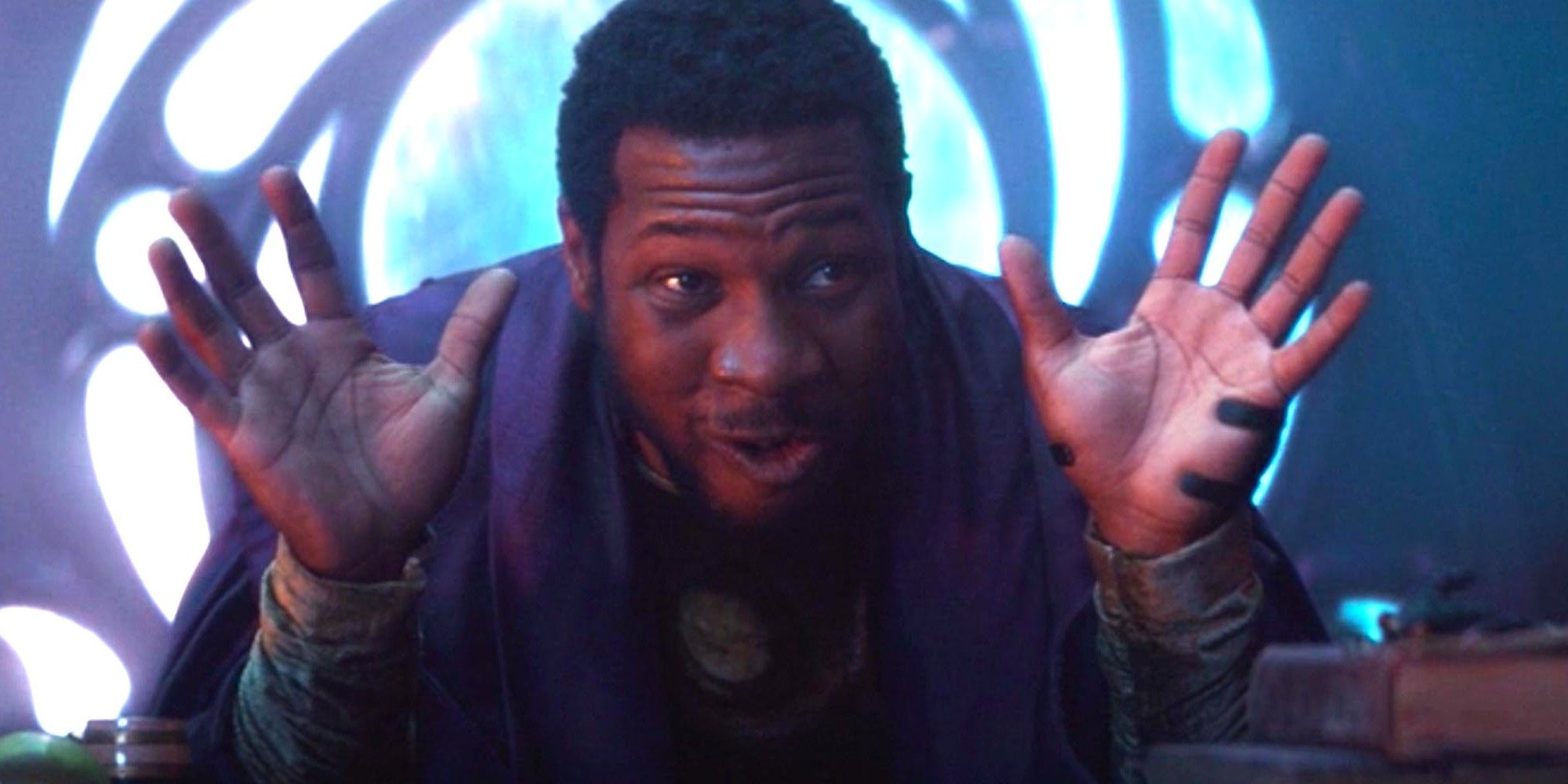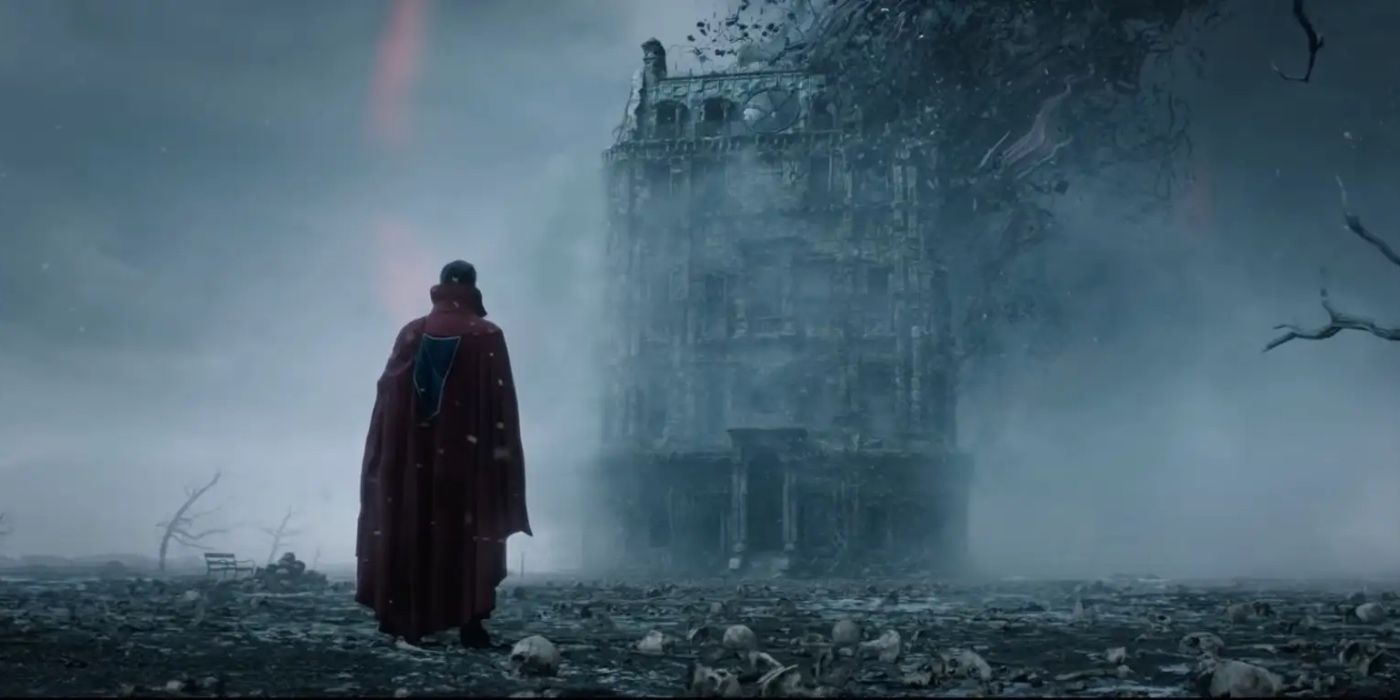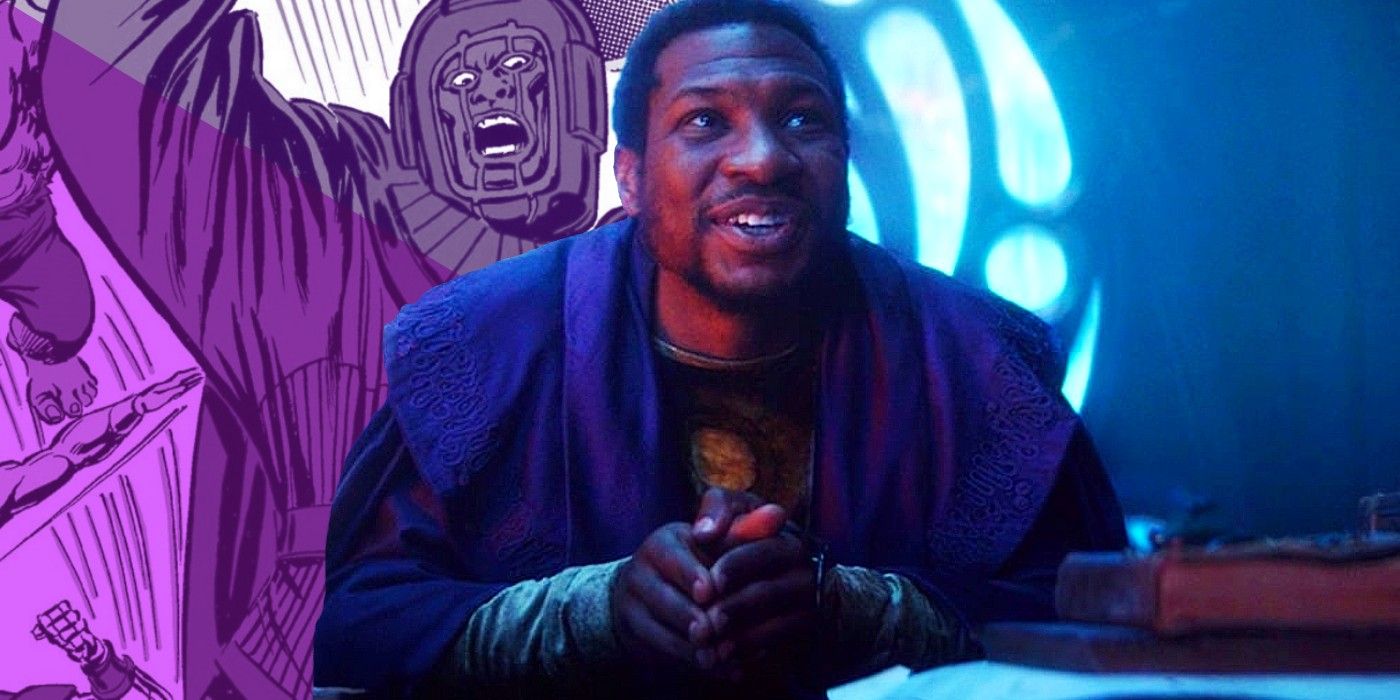Warning: This article contains spoilers for Doctor Strange in the Multiverse of Madness.
Doctor Strange in the Multiverse of Madness secretly revealed the rules of engagement in the coming multiversal war–and made Kang the Conqueror's triumph inevitable. "The multiverse is a concept about which we know frighteningly little," Stephen Strange observed in Spider-Man: No Way Home. He now knows a lot more, of course, after getting something of a crash-course courtesy of America Chavez.
The multiverse has been a background element of the MCU since 2013 when theoretical physicist Erik Selvig scrawled words related to it on a chalkboard. But it's only now, in Phase 4, that the multiverse is increasingly driving the narrative. Loki established the origin of the multiverse and set up Kang the Conqueror as its greatest villain, foretelling a coming multiversal conflict between different variants of the warlord. Doctor Strange in the Multiverse of Madness has gone one step further, revealing some of the multiversal rules determining how that war is fought.
Marvel didn't actually hold a creative summit on the multiverse's rules until after production had completed on Loki and Doctor Strange 2. Marvel has cultivated the idea of an MCU masterplan, but in reality, like viewers, they were left looking back at the basic rules that had been established and figuring out how to put the various ideas together. Fortunately, these two stories establish so much that should really prove vital going forward.
MCU's Multiverse Rules Explained (As We Know It)
The origin of the MCU's multiverse was revealed in Loki. The premiere included an entertaining animated infodump presented by Miss Minutes, in which she explained the multiverse is inherently chaotic. Any moment of decision has the power to serve as a nexus, creating a branched timeline; these decisions don't need to be significant, with Miss Minutes even claiming an entire branched universe could be created by someone simply being late for work. Unfortunately, some of these branched timelines became aware of one another, resulting in a multiversal war. He Who Remains was the winner, and he established the Time Variance Authority to prune the branches and maintain only the one so-called "Sacred Timeline." He Who Remains was ultimately killed by Sylvie, and the multiverse has been restored.
Close examination of Loki hinted that branched timelines could intersect with one another, and Doctor Strange in the Multiverse of Madness revealed that process is dangerously unstable. If an individual from one universe leaves too significant a "footprint" in another, they risk causing a collision known as an incursion in which the two realities become one. Doctor Strange experienced a sinister universe ravaged by an incursion, with reality continuing to gradually collapse. Incursions are a terrifying multiversal threat, and they will determine the shape of the coming war.
Loki Teased Kang The Conqueror's Multiverse War
He Who Remains was a variant of Kang the Conqueror, a classic Marvel villain with a complicated backstory who strives to conquer all reality. Marvel Studios appear to be streamlining Kang's origin, with all the different personas and identities he has adopted portrayed as alternate-timeline versions destined to vie for supremacy. He Who Remains had triumphed in the first multiversal war, and he had secured his victory by destroying all other branched timelines, meaning no other variants could emerge to challenge him.
Granted, the multiverse and all its branches were restored when Sylvie killed He Who Remains, and Loki's ending saw the trickster god return to the TVA to learn a variant of Kang had claimed it as his power-base. This Kang had rewritten the histories of TVA members to turn them into his servants, and agents were shown racing to the army preparing for battle, clearly signifying a multiversal war was breaking out.
How Doctor Strange 2 Sets Up MCU's Multiverse War
Doctor Strange in the Multiverse of Madness' incursions establishes how the multiversal war must be fought. They are an insurmountable problem to any variant of Kang who would conquer another reality because doing so will naturally mean they exert too great a "footprint" on the universe they are attacking, resulting in an incursion that destroys both their target universe and their own. It's possible some variants of Kang will figure out how to prevent incursions. Still, even then, it wouldn't be safe to conduct a multiversal war simply because they couldn't run the risk of a rival countering them and opting for mutually assured destruction rather than defeat.
There are, however, two staging posts from which a multiversal war could safely be waged. The first would be from the TVA headquarters, a place stated to be outside the normal flow of time and would, therefore, presumably be unaffected by incursions. Although Loki avoided giving this location a name, it is probably the MCU's version of Chronopolis, a city that serves as the seat of Kang's power. In the comics, Chronopolis sits outside of time in a realm called Limbo, a unique dimension existing outside the timestream that any time traveler briefly passes through; it's likely the MCU version is found in the Quantum Realm and is the Quantum Realm city briefly seen in Ant-Man & the Wasp. This would explain why Jonathan Majors, the actor who is playing variants of Kang in the MCU, is set to return as the main villain in Ant-Man & the Wasp: Quantumania, a film whose title clearly teases further exploration of the Quantum Realm.
The second possible staging post for a multiversal war is even more complex. According to some multiversal theories, the various branches of the multiverse will ultimately come together again at the very end of time, as all universes die from heat death. Therefore, it would be possible for a variant of Kang to base himself at the very end of time and launch attacks on all the different branches. In addition to introducing the TVA's base of operation, Loki saw variants of the trickster god discover a Citadel at the End of Time - the place where He Who Remains had chosen to reside. It is surely no coincidence that Loki introduced the only two places from which it would be safe to wage a multiversal war.
Loki & Doctor Strange 2 Show How The MCU's Multiversal War Must Be Fought
Loki clearly set up the multiversal war, but Doctor Strange in the Multiverse of Madness subtly established the ground rules and the nature of the conflict. The TVA base and the Citadel at the End of Time are the two most important places in the multiverse; should any variant of Kang conquer these two, they would be operating from a position of strength, and they would be able to repeat He Who Remains' strategy of pruning all other branches. Already one Kang has claimed the TVA headquarters, and it is likely he will use this to stage invasions of other timelines - just as Kang uses Chronopolis in the comics. Countless realities will fall to his forces, even as his enemies try to launch a counter-attack.
In truth, there is only one place from which a counter-attack can be successfully launched; the Citadel at the End of Time. Loki left Sylvie there with no idea of the Citadel's true importance. Sylvie will likely find herself working with another variant of Kang to overthrow the TVA or else leading a resistance movement herself. Thus Loki and Doctor Strange in the Multiverse of Madness have revealed how the MCU's multiversal war must be fought.

